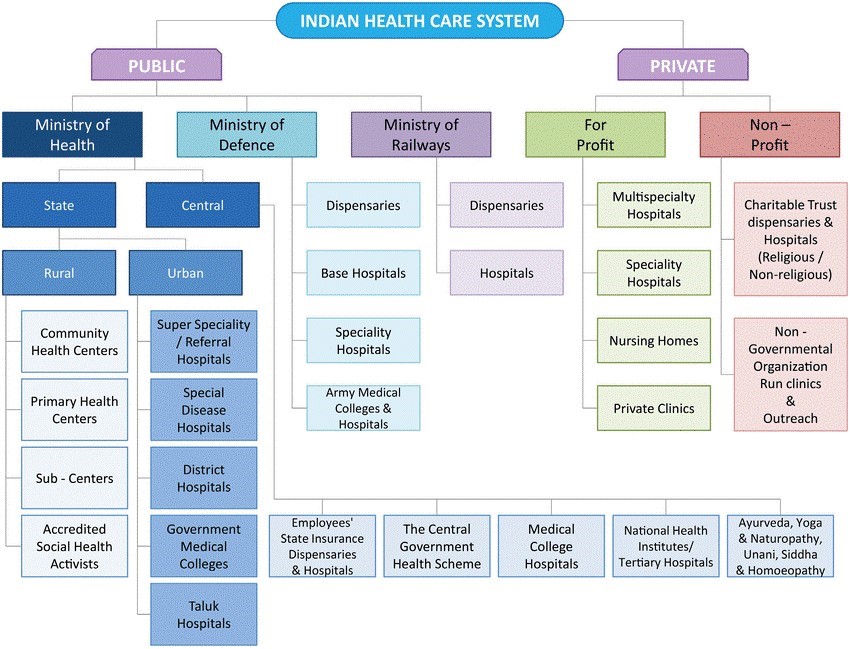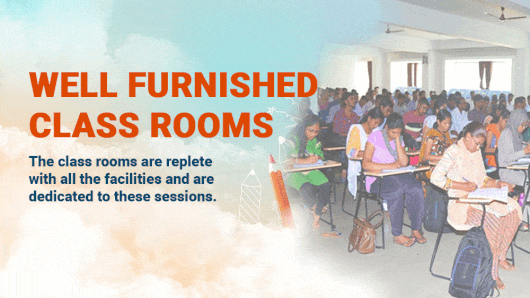Compassion in Healthcare: Transforming India’s Primary Health System
Syllabus:
GS-2:
Health , Government Policies & Interventions
Focus:
The World Health Organization (WHO) recently released a report highlighting the transformative role of compassion in primary healthcare. It emphasized empathy, dignity, and responsiveness as essential components for improving quality of care. Indian case studies from Rajasthan, Gujarat, and Tamil Nadu illustrate how compassion enhances healthcare delivery across diverse settings.

Understanding Compassion in Primary Healthcare:
a. WHO’s Global Perspective
- In January, the World Health Organization (WHO) emphasized the critical role of compassion in transforming primary healthcare (PHC) systems globally.
- Compassion includes awareness, empathy, and responsive action to community needs.
- It enhances the quality of care and supports long-term health system improvements.
b. India’s PHC Infrastructure
● India has an expansive PHC network:
○ Sub-centres serve 3,000–5,000 people.
○ Primary Health Centres (PHCs) serve 20,000–30,000 people.
○ Community Health Centres (CHCs) cater to 80,000–120,000 people.
- Total: Over 1.6 lakh sub-centres, 26,636 PHCs, and 6,155 CHCs (as per National Health Mission data).
| Compassion in Health Care: A Strategic Necessity Why Compassion Matters? Not just ethical—it improves recovery, patient satisfaction, and provider well-being. Makes health care sustainable, patient-centric, and effective. Key Benefits Faster Recovery: Stanford & Johns Hopkins studies show quicker healing and reduced anxiety. For Providers: Reduces burnout, boosts job satisfaction, and strengthens patient relationships. Sympathy vs. Empathy vs. Compassion Sympathy: Pity without action—short-lived and non-transformative. Empathy: Deep emotional connection but risks “empathy fatigue.” Compassion: Balanced response—feeling with the patient while staying emotionally grounded. Implementation Strategies Leadership & Policy: Make compassion central in hospital and policy governance. Training: Include in medical education; teach boundary-setting to avoid burnout. Equity: Extend compassionate care to rural, poor, and marginalized populations. Mental Health: Use trauma-sensitive, stigma-free approaches like in the Bal Ashram case. Global Best Practices UK (NHS): Focuses on compassionate leadership. Japan: Combines holistic healing with universal care. Scandinavian Nations: Prioritize mental wellness in health care. India can embed these within Ayushman Bharat and AIIMS-led training reforms. |
Rural Tribal India: Clinical Courage and Commitment in Rajasthan
a. Gaps in PHC-Community Connection
- Dr. Vidith Panchal works in Ravaj village, Udaipur, under Amrit Clinics managed by the NGO Basic Health Services (BHS).
- He observes a critical issue: most PHCs lack meaningful conversations with communities.
- Primary care often becomes transactional rather than empathetic.
b. A Case of Clinical Courage
- Tukaram, a 22-year-old with chronic TB and mining exposure, weighed only 23 kg when he visited the PHC.
- After failed treatments in three states and multiple relapses, referral to a CHC would have caused financial and physical strain.
- Dr. Panchal managed the case locally with pain management and family safeguards — an act described as “clinical courage” by Dr. Sanjana Mohan.
c. Challenges in Delivering Compassionate Care
●A PHC physician in India handles:
○ 40+ national health programs
○ Operations of PHCs and sub-centres
○ Documentation, training, and patient care
- This overload hampers compassionate patient interactions.
d. Systemic Solutions at BHS Clinics
●BHS promotes compassionate healthcare by:
○ Accompanying patients to referral centres.
○ Raising awareness on TB, silicosis, and drug accessibility.
○ Home visits and personalized counselling.
- Result: Patient footfall at Amrit clinics rose from 40,000 (2021) to 51,930 (2024); majority of patients belong to Scheduled Tribes.
e. Dignity as a Core Value
●BHS practices dignity-driven administration:
○ Staff across levels are respected and empowered.
○ This respect reflects in patient care and staff satisfaction.
- Contrast: Government PHCs often ignore the well-being of frontline workers like ASHAs and ANMs.
Urban and Semi-Rural India: Supporting Survivors of Violence in Gujarat
a. Expanding the Role of ASHAs
- Praveena Ben, an ASHA worker in Patan, Gujarat, was trained by NGO SWATI to support survivors of domestic violence.
- Training included:
- Identifying abuse signs.
- Engaging discreetly during fieldwork.
- Referring women to sub-centres for counselling.
b. Compassionate Public Health Response
- During COVID-19, Praveena helped victims access nearby sub-centres where SWATI provided counsellors.
- This model uses the existing infrastructure and adds a layer of psychosocial care.
- The “upward referral” system bypasses PHCs (often embedded in community) to maintain survivor privacy.
c. Building Trust and Cultural Sensitivity
- ASHAs, being local, can handle sensitive issues with cultural awareness.
- Empowering ASHAs enhances the system’s capacity to deliver gender-sensitive care.
d. Scaling and Sustainability
- Since 2012, SWATI has trained over 400 ASHAs and counsellors.
- Need for systemic support:
- Incorporating trauma-informed protocols.
- Allocating resources to strengthen grassroots support.
- Incorporating trauma-informed protocols.
Tamil Nadu: A Model of Disaster-Ready, People-Centric Healthcare
a. Research Findings and Structural Gaps
- Dr. Monica Das Gupta’s research highlights India’s fragmented disaster response where PHCs often play a minimal role.
- In Odisha and West Bengal, for example, army and admin officials handle public health post-disaster.
b. Tamil Nadu’s Integrated Public Health Approach
- Tamil Nadu trains public health staff annually for epidemic and disaster response.
- Each department — from entomologists to district officers — is assigned a clear role.
- Example: After the 2004 tsunami, Tamil Nadu’s health system:
- Ensured safe disposal of bodies and animal carcasses.
- Controlled fly infestation and ensured hygiene in relief camps.
- Monitored food safety in donated supplies.
c. Governance and Coordination
Tamil Nadu’s success is backed by:
- Interdepartmental cooperation under Chennai Municipal Corporation Act.
- Defined responsibilities, annual district-level coordination meetings.
Compassion as the Foundation of Effective PHC:
a. Key Takeaways from WHO
- Compassion, built on trust, dignity, and respect, is essential for effective primary healthcare.
- Human-centric relationships improve responsiveness to diverse population needs.
b. Role of Frontline Workers
- ASHAs, ANMs, and other grassroots staff need institutional compassion to continue delivering empathetic care.
- Support systems, recognition, and manageable workloads are essential.
c. Need for Systemic Reform
- Compassionate care should not rely on individual heroism.
- Reforms must:
- Build capacity.
- Integrate gender and trauma-sensitive protocols.
- Strengthen PHC governance and human resources.
Conclusion:
India’s vast primary healthcare infrastructure holds enormous potential to deliver compassionate care. Examples from Rajasthan, Gujarat, and Tamil Nadu show that empathy, courage, and systemic support can dramatically improve outcomes. The future of public health lies in empowering frontline workers, embracing patient dignity, and institutionalizing compassion at every level.
Source: TH
Mains Practice Question :
“Discuss the role of compassion in strengthening India’s primary healthcare delivery, with reference to rural, urban, and disaster-prone regions. How can systemic reforms support grassroots health workers to ensure people-centred care?”





